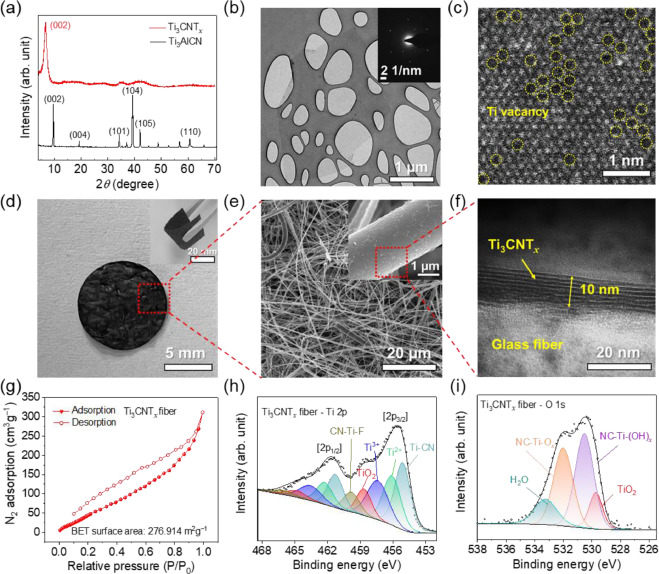Highly defective Ti3CNTx-MXene-based fiber membrane anode for lithium metal batteries
-
Authors :
Su-ung Chae, Seho Yi, Jaeeun Yoon, Jong Chan Hyun, Sehyun Doo, Seungjun Lee, Juyun Lee, Seon Joon Kim, Young Soo Yun, Jung-Hoon Lee, and Chong Min Koo
-
Journal :
Energy Storage Materials
-
Vol :
52
-
Page :
76-84
-
Year :
2022

Abstract
Lithium metal batteries (LMBs) have attracted increasing attention owing to their high theoretical capacity and low reduction potential. However, safety concerns and their low coulombic efficiencies (CE) arising from the nonuniform and irreversible formation of Li dendrites on their anodes hinder their practical application. Here, we demonstrate that a highly defective titanium-carbonitride (Ti3CNTx)-MXene-based fiber membrane can function as a dendrite-free anode substrate for LMBs. The Ti3CNTx fiber membrane electrodes, prepared via the electrostatic self-assembly of Ti3CNTx flakes onto a glass-fiber membrane substrate, had a high surface area (∼276 m2 g−1), leading to a high CE of ∼99.1%, excellent cycling stability of more than 1000 cycles in a Li half-cell test, and high energy density (581.78 W h kg−1) and high power density (3008 W kg−1) in a Li-MXene-fiber/NCM622 full-battery test. This excellent cell performance is attributed to the strong lithiophilicity and high density of Ti vacancy defects in the Ti3CNTx MXenes, as well as the high surface area of the fiber membrane electrode. The lithiophilicity and defect structure of Ti3CNTx MXenes in LMB operation were elucidated by DFT calculations.
















